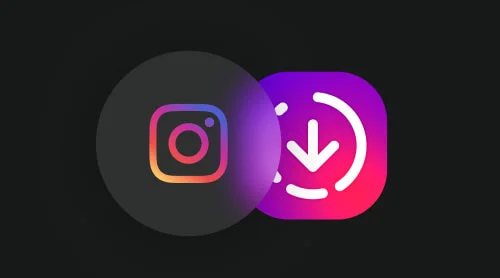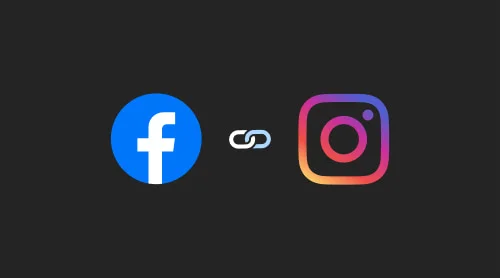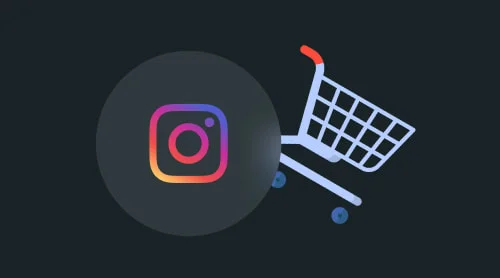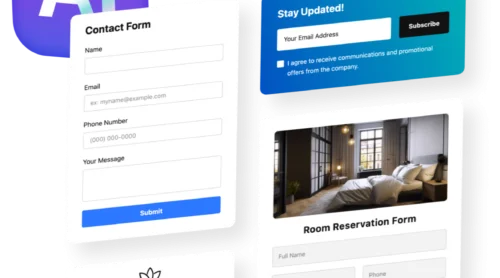Why Your Business Needs Instagram Stories
Let’s make facts speak for themselves:
36% of businesses have implemented the usage of Instagram Stories into their marketing strategy. And it’s fascinating to note that a majority of Instagram Stories viewers, approximately 66%, are not followers of the business or brand but are interested in learning more about their offerings on the platform. This indicates that Instagram has become a go-to platform for people looking to explore new businesses and their products or services. For more engaging stats about Stories and other aspects of the platform, see the article on key Instagram statistics for businesses.
The rapid growth of Instagram Stories is one for the books, as it is considered to be one of the fastest-growing features in the history of Facebook and Instagram, following the success of the News Feed. In fact, some experts predict that Instagram Stories may even surpass the Feed in terms of the number of views it generates, further solidifying its importance as a valuable tool for businesses looking to engage with their audience.
The Top Advantages of Using Instagram Stories
Instagram Stories are located at the top of the Instagram app, making them the first thing users see when they log on. This increased visibility and engagement can help boost brand awareness and attract new followers. There are many other reasons why your business should start using this feature now. Here are some to consider:
Stay front of mind:
Instagram Stories appear at the top of your audience’s feed for 24 hours, giving you the opportunity to post more frequently and increase brand awareness.Protect your quality feed:
With Stories, the photos and videos don’t get saved to your profile, so you can experiment with real-time marketing without cluttering your profile with imperfect images.Become more discoverable:
Stories are discoverable, making it easier to expand your follower base.Include a link without changing your profile:
As long as you have over 10,000 followers, you can add links to your content, making it easier to direct your audience to a particular webpage.Have some fun with your audience:
With Stories, you have more freedom to experiment with different types of content and show the fun side of your brand.
Instagram Stories offer a fantastic opportunity to engage with your audience in a more flexible way and stay ahead of the ongoing changes to the platform’s algorithm. There are so many benefits to giving it a go, so why not try it out for your business?
Bonus: How to Embed Instagram Content on Your Website
Surely by this moment you have already thought hard about working with Instagram and Instagram Stories. We suggest you do not stop there and expand the capabilities of your website or blog. How to do it? Easier than ever by just adding the Instagram Feed widget to your website. This will greatly expand your marketing opportunities, as well as attract a new audience to your Instagram account, and so even more people will see your Stories!
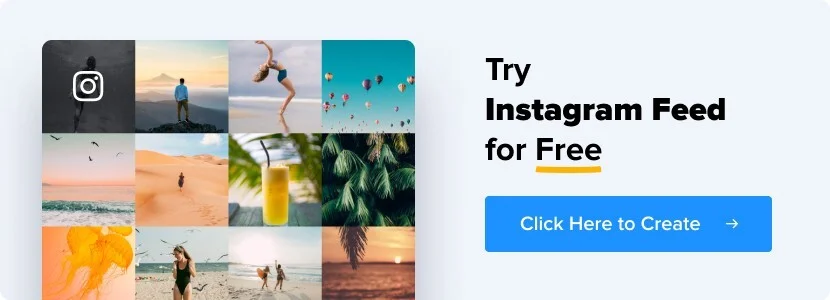
The process of adding this widget to your website is swift and requires just a few easy to perform steps:
- Configure Instagram Feed widget.
- Get Instagram Feed Embed Code.
- Embed Instagram Feed Code on your Website.
You can get more info on adding the widget to any website in the related article. Don’t wait any further and start expanding your website’s features with awesome Instagram content!
Instagram Stories Examples
In this paragraph, we’ll showcase some examples of popular brands’ Instagram Stories. It’s important to pay attention to what brands are doing on social media platforms like Instagram, as they often set trends and best practices for businesses looking to reach their audience. By studying the strategies of successful brands, you can gain inspiration and insights into how to create engaging and effective social media content for your own brand. So, let’s take a look at some examples of how top brands are using Stories to connect with their followers and promote their products or services.
Zara

Stories are a great way to showcase what’s new in your brand’s lineup when it comes to clothing and accessories. Zara regularly publishes novelties of her collections, which stirs up the interest of the audience and motivates users to quickly go to the catalog and press the coveted “buy” button.
Lego

Thanks to their extensive functionality, Instagram Stories have become an ideal interactive tool that allows you to entertain your audience. For example, Lego invites everyone to take a quiz, which will definitely not go unnoticed. After all, there is nothing easier than tapping on the screen while viewing the stories of your favorite brand. And this, in turn, increases the activity of the account.
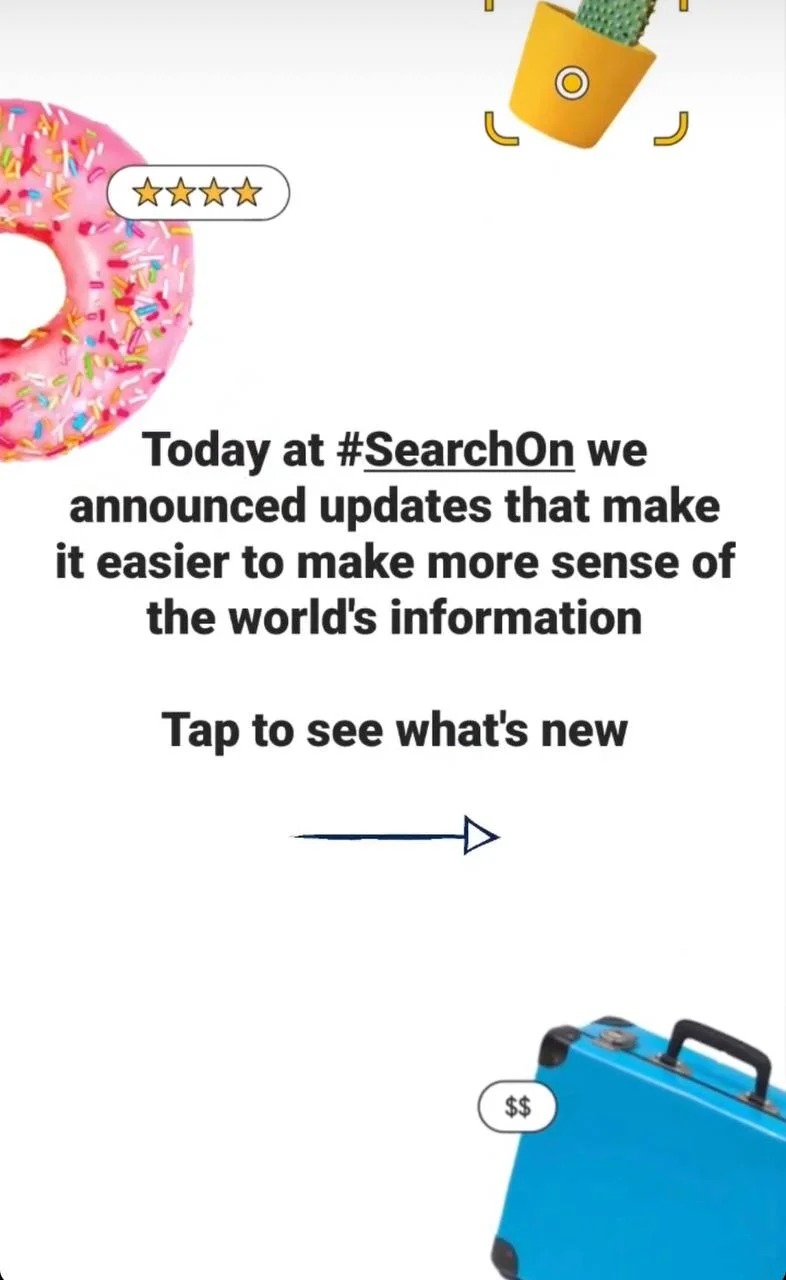
With the help of Instagram Stories, you can once again remind your audience of some event or event, while doing it quite unobtrusively, since Stories will disappear after 24 hours. By duplicating important information in stories, you will definitely draw the attention of your audience to it, as Google did.
How to Create Stories: All Methods
Instagram Stories offer an exciting way for individuals and brands to express creativity, engage with followers, and share content. In this guide, we’ll explore various methods to create Instagram Stories, including Collaborative Stories, which is an essential feature for enhancing engagement and expanding your reach. Whether you’re new to Instagram or an experienced user, these methods will help you create Stories that resonate with your audience.
Collaborative Instagram Stories
One of the most powerful and effective ways to create interactive and engaging content is through Collaborative Instagram Stories. This feature enables you to invite other users to contribute to your Story, fostering greater community engagement and allowing you to showcase user-generated content. By encouraging others to add their own media, you can make your Stories more dynamic, diverse, and engaging. Here’s how to create a collaborative Story step by step:
- Open the Instagram App. Start by opening Instagram and swiping right to access the Stories camera. This is the entry point for all Instagram Stories, including collaborative ones.
- Capture or Upload Media. Take a new photo or video, or choose existing media from your camera roll. Keep in mind that Collaborative Stories work best when your content invites others to contribute, so choose visuals that encourage engagement.
- Edit Your Media. Use Instagram’s editing tools, such as filters, stickers, text, and drawing features, to customize your media. The more creative and inviting your content is, the more likely others will want to participate.
- Add to Story and Enable Collaboration. After editing, tap on “Add to Story,” then choose the “Collaborate” option. You can either open the collaboration to all followers or limit it to people you follow. This flexibility allows you to control who can contribute, making it ideal for community building or specific group activities.
- Invite Others to Contribute. Send invitations to users you want to collaborate with. Once they accept, they can begin adding their own photos, videos, and media to your Story. This creates a shared Story that evolves with each new contribution.
- Manage Contributions. You can easily view and manage contributions by tapping your profile picture at the top of your feed. If you need to remove a collaborator or end the participation, simply select the “X” next to the contributor’s name.
By leveraging Collaborative Instagram Stories, you can boost user engagement and make your content more interactive. This feature is particularly useful for promoting user-generated content, hosting community events, or even co-creating Stories with influencers. It’s a great way to build a stronger connection with your audience, increase participation, and foster a sense of community around your brand or personal profile. Collaborative Stories are ideal for encouraging Instagram Collab Story content that makes your profile more engaging and diverse.
Using the Instagram App
Creating Instagram Stories through the app is quick and easy for users at all levels. Follow these steps to get started:
- Accessing the Stories Camera. Open the Instagram app and swipe right from the main feed or tap the “+” icon to open the Stories camera.
- Capturing or Uploading Content. Take a new photo or video, or upload one from your camera roll by tapping the gallery icon. Ensure your content is optimized for the vertical format (9:16).
- Editing Your Story. Enhance your Story with Instagram’s editing tools. Apply filters, add stickers, and use text or drawing tools to customize your content. This helps to give your Story a more personal or branded look.
- Using Interactive Features. Add interactive elements like polls, quizzes, and Q&A stickers to engage your audience and encourage participation.
- Tagging and Hashtags. Mention other users with the @mention sticker or text, and include relevant hashtags to broaden your Story’s reach.
- Sharing Your Story. Once ready, share your Story by tapping “Your Story” or use the “Close Friends” option for a more selective audience. You can also send it directly via Instagram Direct.
- Archiving and Highlights. After 24 hours, your Story will automatically save to your archive, where you can view or repurpose it. Highlight important Stories on your profile for permanent visibility.
By using the Instagram app, you can easily create engaging Stories that resonate with your followers, enhancing your personal or brand presence on the platform.
Branded Instagram Stories
Branded Instagram Stories are a powerful way for businesses to connect with their audience and promote products. Follow these steps to create an engaging branded Story:
- Define Your Objective. Decide whether your goal is to promote a product, create brand awareness, or offer behind-the-scenes content. A clear objective will guide your Story’s content.
- Design Your Story. Use your brand’s colors, fonts, and logos to create a visually cohesive Story that aligns with your identity. Ensure each slide flows well and maintains viewer interest.
- Add Hashtags and Mentions. Relevant hashtags and tagging key accounts can expand your Story’s reach. Consider using custom hashtags to create engagement around your brand or campaign.
- Use Interactive Features. Include polls, quizzes, and questions to engage your audience and encourage interaction. These features make your Story more memorable and boost engagement.
- Craft a Strong CTA. Always include a clear call-to-action (CTA), such as “Swipe up to shop” or “Tap to learn more,” driving users toward desired actions like visiting your site or making a purchase.
- Add Music or Sound. Use music that matches your brand’s tone or the mood of the Story to enhance the emotional connection with your audience.
- Promote and Monitor. Share your Story across platforms and consider paid ads to increase visibility. Use Instagram analytics to track performance and refine your strategy for future Stories.
By following these steps, businesses can create branded Instagram Stories that engage, inspire, and drive results, building a strong connection with their audience.
Using Third-Party Apps
For those who want more advanced design options, third-party apps can enhance the look and feel of your Stories. Apps like Canva, Unfold, and InShot offer a variety of templates, layouts, and design elements to create professional and visually appealing Stories. These tools are ideal for brands and influencers who want polished content.
Top Tools Every Marketer Needs for Instagram Stories
While Instagram provides a range of features and tools for creating Stories, there are also several third-party tools that can help marketers take their content to the next level. Here are five top ones that may come in handy in your work with Stories:
Canva: Canva is a graphic design platform that offers a range of templates and tools for creating stunning Instagram Stories. With Canva, you can create custom designs, add text, and incorporate your brand’s visual identity. Canva also offers a range of pre-made templates specifically for Instagram Stories, making it easy to create professional-looking Stories quickly and easily.
Hootsuite: Hootsuite is a social media management tool that can help you schedule and publish Instagram Stories. With Hootsuite, you can plan and schedule your Stories in advance, ensuring that you’re posting consistently and at the optimal times for your audience. Hootsuite also offers analytics tools that can help you track your Instagram Story performance and make data-driven decisions.
Unfold: Unfold is a popular app for creating Instagram Stories that offers a range of templates and design elements. With Unfold, you can create custom designs, add text, and incorporate your brand’s visual identity. Unfold also offers a range of pre-made templates specifically for Instagram Stories, making it easy to create professional-looking Stories quickly and easily.
Later: Later is a social media scheduling tool that can help you plan and schedule your Instagram Stories in advance. With Later, you can plan and schedule your Stories, ensuring that you’re posting consistently and at the optimal times for your audience. Later also offers analytics tools that can help you track your Instagram Story performance and make data-driven decisions.
Using these tools can help marketers create engaging and effective Instagram Stories that resonate with their audience and achieve their business goals. By incorporating these tools into your Instagram Story strategy, you can take your Stories to the next level and stand out in a crowded digital landscape.
A Quick Start Guide to Instagram Stories Ads
Instagram Story advertisements are vertical commercials that can be launched on the Stories feature.
Instagram provides various targeting options for your ads, such as reach, video views, traffic, conversions, app installs, and brand awareness. Additionally, in contrast to an organic Instagram Story, an Instagram Story ad doesn’t vanish after 24-hours. Instead, similar to any other ad created for Instagram or Facebook, you can choose the length of the campaign and the ad frequency on Facebook’s ad platform.
An Instagram Story ad is integrated smoothly into a user’s Stories viewing experience. Furthermore, a user doesn’t need to follow your account to view an ad from your brand. For instance, I was presented with a Crest ad even though I don’t follow Crest on Instagram.
You have various options for ad formatting, such as video, picture, or carousel. A video ad can play for a maximum of 15 seconds, a picture ad will play for five seconds, and a carousel ad allows brands to play three different pieces of content (photos, videos, or both) within one ad.
HubSpot provided a cool guide on how you can create Instagram Ads, there you can find some useful tips:
All You Need to Know About Stories Analytics
According to HubSpot’s research data, 50% of Instagram users prefer image-based ads that show product shots and light text.
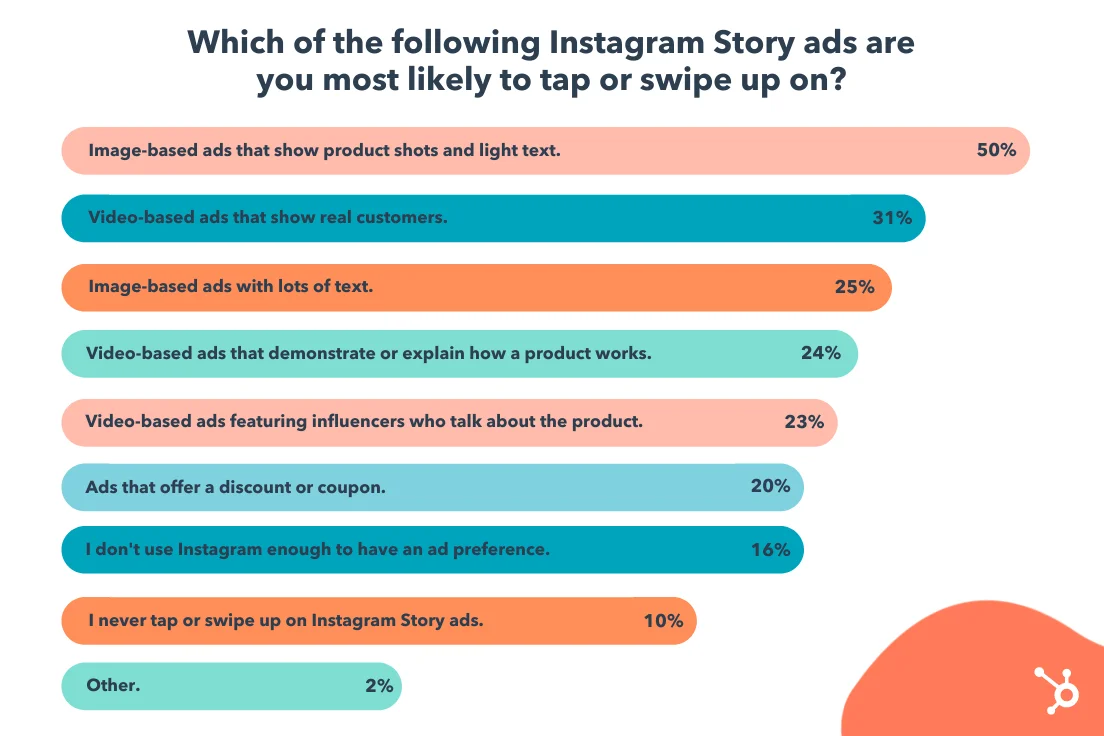
Below we will cover all you need to know about Instagram Stories analytics and how it can help you track and improve your Stories’ performance.
To access Instagram Stories analytics, you must have a business account. Once you have a business account, you can see your Story analytics by tapping your profile icon, then tapping the three lines in the top right corner, and selecting Insights. From there, you can view the performance of your recent Stories, including reach, impressions, and exits.
Metrics to track
There are several metrics you should track when it comes to Instagram Stories analytics:
- Reach: The number of unique accounts that have viewed your Story.
- Impressions: The total number of times your Story has been viewed.
- Exits: The number of times someone left your Story before it ended.
- Replies: The number of times someone has replied to your Story.
- Taps forward/back: The number of times someone taps to skip or go back to the next Story.
- Swipe away: The number of times someone has swiped away from your Story.
Once you have access to your Instagram Stories analytics, you can use the data to improve your Story content and strategy. For example, if you notice a high number of exits at a specific point in your Story, you can consider shortening or changing that part of your Story to keep your audience engaged. Additionally, if you notice a high number of replies, you can use that information to understand what type of content your audience prefers and tailor your future Stories accordingly.
Analytics can help businesses understand how their Stories are performing and how they can improve their strategy. With access to metrics such as reach, impressions, and exits, businesses can use the data to tailor their Story content and engage with their audience more effectively.
Tips and Tricks for Boosting Story Views and Engagement on Instagram
With so much competition, it can be challenging to get your stories seen by a wide audience. That’s why now we’ll explore some tips and tricks to help you boost your Instagram story views and engagement, so you can connect with your followers and grow your brand.
✔ Post Consistently
The key to keeping your audience engaged is to post consistently. You need to ensure that you are posting stories regularly, at least once a day, to keep your followers interested. Posting consistently can also help you stay top of mind and increase the chances of your stories being seen by your followers.
✔ Use Creative and Eye-catching Visuals
Instagram is all about visuals, and your stories need to be visually appealing to catch your follower’s attention. Use bright and bold colors, play with different fonts, and use animations to create engaging visuals. You can also use Instagram’s built-in tools like stickers, GIFs, and filters to add some personality to your stories.
✔ Use Hashtags and Location Tags
Hashtags and location tags can help increase the discoverability of your stories. When someone searches for a specific hashtag or location, your story will appear in the results if you have used the relevant tags. This can help you reach a wider audience, and potentially gain new followers.
✔ Collaborate with Other Accounts
Collaborating with other accounts can be a great way to increase your story views and engagement. When you collaborate with another account, you can reach their followers, and they can reach yours. This can help you gain new followers, and also introduce your brand to a new audience.
✔ Use Instagram Stories Ads
If you have a budget for advertising, you can consider using Instagram Stories ads. As we’ve already mentioned above, these ads appear between users’ stories and can help you reach a wider audience. You can target your ads to specific demographics, interests, and behaviors, making it more likely that your content will be seen by people who are interested in your brand.
✔ Engage with Your Audience
Engaging with your audience is crucial to building a relationship with them. When someone responds to your story, make sure to respond to them in a timely manner. You can also use polls, questions, and quizzes to encourage your followers to engage with your content.
✔ Analyze Your Metrics
Finally, it’s important to analyze your story metrics to see what’s working and what’s not. Instagram provides insights into your story views, impressions, and engagement. You can use this information to optimize your content and make improvements to your strategy.
And also remember to experiment with different strategies and have fun with your content to keep your audience interested and engaged.
How to Leverage Instagram Stories to Sell More
Shopping on Instagram has become a popular and widely used feature. A lot of online businesses migrated to Instagram and created their own marketplaces there, which allows a huge number of people to see and buy various cool products there.
Everything you would like to know about Instagram Shopping, we have compiled in our new cool guide on Instagram Shopping.
However, our guide would be incomplete without a mention of Instagram Stories. They have become a complete tool for shopping. Let’s see how they can be used for e-commerce purposes and how your business can benefit from it.
Use Product Stickers
Instagram introduced product stickers, allowing businesses to tag their products in their stories. When users click on the product sticker, they are taken to the product page where they can learn more and make a purchase. This makes it easy for businesses to showcase their products and drive sales directly from their stories.
Highlight Your Best Products
Highlighting your best products in your stories can help you catch your followers’ attention and drive sales. You can create a highlight reel on your profile featuring your best products or create a series of stories showcasing a specific product. Using visuals, product descriptions, and pricing information can help you convince your followers to make a purchase.
Use Influencers to Promote Your Products
Influencer marketing has become a popular way for businesses to reach new audiences and drive sales. You can collaborate with influencers in your niche and have them promote your products on their Instagram Stories. This can help you reach a wider audience and build trust with their followers, increasing the chances of making a sale.
Run Contests and Giveaways
Contests and giveaways can help you generate buzz around your products and drive sales. You can use Instagram Stories to promote your contest or giveaway and encourage your followers to participate. You can require participants to follow your account or tag their friends, increasing your reach and engagement.
Use Instagram Live
Instagram Live allows businesses to connect with their audience in real-time, answer questions, and showcase their products. You can use Instagram Live to give a behind-the-scenes look at your business or showcase new products. This can help you build trust with your audience and increase the chances of making a sale.
Use Instagram Story Ads
Instagram Story ads can help you reach a wider audience and drive sales. You can create ads featuring your products and target them to specific demographics, interests, and behaviors. This can help you reach people who are interested in your products and increase the chances of making a sale.
FAQ
Now that you know everything there is to know about Instagram Stories, let’s take a look at the questions you might have along the way, as well as identify the main problems in working with Stories.
How do I create an Instagram Story?
To create an Instagram Story, open the app and tap the camera icon in the top left corner. From there, you can take a photo or video, add filters, stickers, and text, and post it to your Story. You can also upload content from your camera roll.
Can I see who viewed my Instagram Story?
Yes, you can see who viewed your Instagram Story by swiping up on the Story and looking at the list of viewers. You can also see how many people have viewed your Story and who has engaged with it through polls, questions, or other interactive features.
How can I make my Instagram Stories more engaging?
You can make your Instagram Stories more engaging by adding stickers, text, and music, using polls and questions, and creating a series of Stories that tell a story. You can also use Instagram’s interactive features, such as the swipe up link, to drive traffic to your website or blog.
How long should my Instagram Stories be?
Instagram Stories should be between 15 and 30 seconds long, as that is the maximum length of a single Story. If you have a longer video, you can split it into multiple parts and post it as a series of Stories.
Can I save my Instagram Stories?
Yes, you can save your Instagram Stories by clicking the download icon in the bottom left corner of the screen. You can also save them to your camera roll or archive them on your profile.
Can I schedule my Instagram Stories?
Yes, you can schedule your Instagram Stories using third-party tools like Later or Hootsuite. These tools allow you to plan your content in advance and post it automatically at a specified time. However, you still need to manually post the Story from your phone when it’s time for it to go live.
How can I use Instagram Stories for my business?
You can use Instagram Stories for your business by showcasing your products or services, sharing behind-the-scenes content, highlighting customer testimonials, and promoting sales or events. You can also collaborate with influencers or other businesses to increase your reach and engagement. Finally, you can use Instagram Stories ads to reach a wider audience and drive sales.
How do I create an Instagram Shop?
To create an Instagram Shop, you need to first have an Instagram business account and meet the eligibility requirements set by Instagram. Once you have a business account, follow these steps:
- Go to your Instagram profile and click on the three lines in the top right corner.
- Select “Settings” and then “Business.”
- Select “Instagram Shopping” and follow the prompts to connect your Facebook page and set up your shop.
- Once your shop is approved by Instagram, you can start tagging your products in your posts and stories.
Note that the process of setting up an Instagram Shop may vary depending on your location and the nature of your business. You can find more detailed instructions in our guide on creating Instagram shop.


